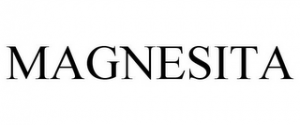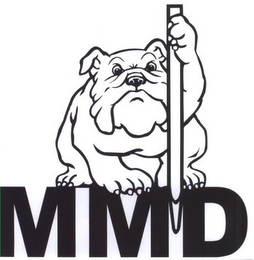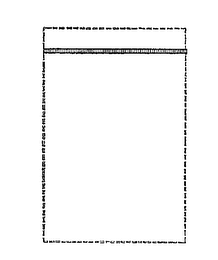At its most basic, a trademark cease and desist letter explains the what and why of the wrongful conduct and requests that it stop. Below provides a more detailed explanation of some components that may go into a cease and desist letter, depending on the circumstances.
1. Â Who is this?
Simply explain who you are. For example, “I’m the president of Acme, Inc.”
2. Tell them what you want
Provide a brief one or two sentence summary of the issue and what you want. For example, “I am writing regarding Beta Inc.’s use of the word “BOSSES” in connection with the sale of widgets. As this use infringes Acme’s trademark rights, Acme demands that you immediately stop all use of BOSSES in connection with the sale of widgets.”
3. Explain your rights
Provide an explanation of the basis for your trademark rights. Trademark rights can be based on use of a mark in connection with goods or services. A trademark registration is helpful but is not required to obtain trademark rights.
Acme Inc. is the owner of the BOSS trademark. Acme has used the mark continuously and exclusively in connection with widgets since at least [first use date]. Acme has advertised and sold widgets in the U.S. through its [channels of trade, e.g. website, retailers, etc…]. Therefore, Acme has established valuable trademark rights. In addition to its common law trademark rights, Acme is the owner of U.S. Trademark Registration No. __________ for the mark BOSS.
4. Introduce the wrongful conduct
Explain the activities of the recipient that violate your trademark rights.
Beta is engaged in the sale of widgets having the BOSSES mark at [locations of sale, e.g. website, retail, etc]. This activity infringes Acme’s trademark rights.
5. Explain the applicable law
Explain the trademark law that is applicable to your situation.
Trademark law prohibits parties from using a trademark in a manner that is likely to create confusion in the market place as to the source of the goods provided in connection with the trademark. Whether there is a likelihood of confusion depends on several factors including the similarities of the marks and the similarities of the good/services.
6. Explain how the law applies
Explain how the trademark law applies to your situation.
Here, comparing the marks, BOSSES is very similar to BOSS. Each mark contains the common root word BOSS, which provides a similarity of sound, meaning, and appearance. Your mark merely provides a plural of Acme’s BOSS mark. Therefore, the marks are similar.
Turning to the goods, your widgets are ________ type widgets, which are the same type of widget sold by Acme under its BOSS trademark. Further, your widgets are sold to the same type of customers and are useable in the same type of applications as the Acme widgets sold under the BOSS mark.
As a result, your use of BOSSES in connection with the sale of widgets is likely to cause confusion with Acme’s trademark BOSS in the marketplace.
7. Explain the possible consequences
You can also explain the consequences of trademark infringement.
Trademark law and common law provide protection for trademark owners. Some of the remedies available to trademark owners against trademark infringers include enjoining the infringer from using the trademark, impounding and destroying goods bearing the trademark, recovery of the infringer’s profits, and an award of attorney’s fees.
8. State Your Demand(s)
List your demand or demands.
Therefore, Acme demands that Beta take the following steps by [deadline]: (1) stop using the mark BOSSES and any similar mark in the marketing and sale of widgets; (2) recall and destroy all advertising, products, labels, packaging, stationary, and other materials having the BOSSES mark, (3) turnover control of any domain names having the BOSSES mark to us, etc…
9. Reservation
A reservation of rights statement can be included stating that Acme reserves all of its rights, none of which is waived by the letter.
Cautions
The above are possible parts of a cease and desist letter. Lawyers often receive requests for “forms.” However, forms, if they are any good at all, are only a starting place and most often need modification to fit a particular circumstance. Therefore, the example excerpts might not be appropriate for your circumstance.
Further, it might be that you should not send a cease and desist letter at all. Generally, trademark law awards rights based on priority–that is, who was first. If you send a cease and desist letter to someone that started using their mark before you started using your mark, you could be in trouble. If the recipient was first, he/she/it could be a senior user that could turn around and sue you for infringing their mark. And your letter could be used as an admission of infringement. Therefore, it is critical to determine whether you have priority over the target of your letter before any letter is sent. But examining all the details of priority is outside the scope of this post.
Moreover, the recipient of your letter could use it to gain “home court advantage” by filing a declaratory judgement lawsuit against you in their home state or district. Many courts can only decide cases and controversies. And your threatening cease and desist letter will create a controversy that the target of the letter could use to start a lawsuit in their preferred court asking the court to declare that they do not infringe your mark. Therefore, when sending a cease and desist letter, you must consider the risk that the target could file a lawsuit based on the letter in a court that is far from you or otherwise disadvantageous.
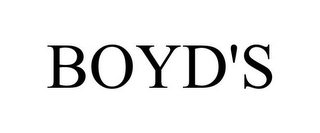 Boyd Coddington’s Hot Rods & Collectibles filed an application to register the trademark BOYD’S for apparel. But the USPTO examining attorney refused the registration based on a likelihood of confusion with the prior mark BOYDS for clothing. The TTAB affirmed the refusal finding the marks were virtually identical and the apostrophe was inconsequential in comparing the marks. Boyd Coddington’s Hot Rods & Collectibles, Inc., No. 78913114 (TTAB 2008).
Boyd Coddington’s Hot Rods & Collectibles filed an application to register the trademark BOYD’S for apparel. But the USPTO examining attorney refused the registration based on a likelihood of confusion with the prior mark BOYDS for clothing. The TTAB affirmed the refusal finding the marks were virtually identical and the apostrophe was inconsequential in comparing the marks. Boyd Coddington’s Hot Rods & Collectibles, Inc., No. 78913114 (TTAB 2008). When considering whether two trademarks are similar for conflict purposes, the marks are considered in their entireties, including their appearance, sound, and commercial impression. Sometimes one of those attributes stands out to distinguish the marks even when similarities exist in the other attributes.
When considering whether two trademarks are similar for conflict purposes, the marks are considered in their entireties, including their appearance, sound, and commercial impression. Sometimes one of those attributes stands out to distinguish the marks even when similarities exist in the other attributes.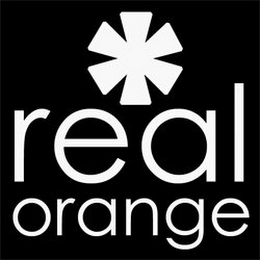 Ann Peterson applied to register the word-and-design mark REAL ORANGE for Christian ministry services in class 45.
Ann Peterson applied to register the word-and-design mark REAL ORANGE for Christian ministry services in class 45.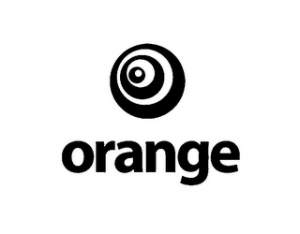 Peterson argued her services were different from the goods and services of reThink’s mark because they were in different International Classes: class 45 in Peterson’s case and Classes 9, 16, and 41 in reThink’s case. Each trademark applicant must (1) provide a
Peterson argued her services were different from the goods and services of reThink’s mark because they were in different International Classes: class 45 in Peterson’s case and Classes 9, 16, and 41 in reThink’s case. Each trademark applicant must (1) provide a 
